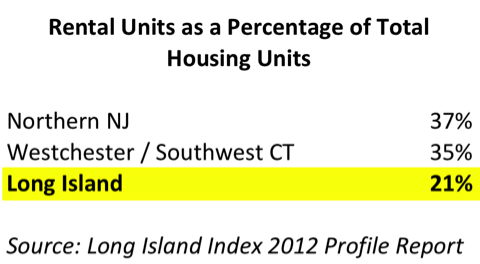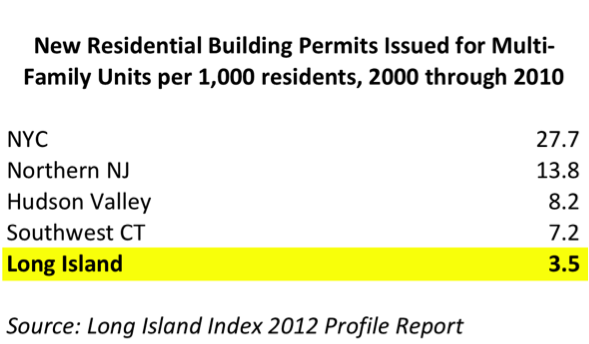The recent economic recession has slowed and in fact reversed the growth in the nation’s total vehicle miles traveled (VMT). It’s common for this to happen temporarily during a recession as job losses mount or people travel less to save money, but there is compelling evidence that the slowdown this time might be more sustained. According to the Federal Highway Administration (FHWA), which compiles historical monthly data on driving distances, Americans drove 2,952,601 million miles between March 1, 2012 and February 28, 2013. That’s 2.6 percent fewer miles than the amount Americans drove in the 12 months before the recession began, and it’s even slightly fewer than the amount driven during the final 12 months of the recession.
Examining the six officially-recognized recessions since 1971, none resulted in such lengthy drops in nationwide VMT as the “Great Recession,” which officially ended in June 2009:

In New York, the decrease in average daily VMT over the last decade has been even more pronounced than at the national level. According to the New York State 2009 NHTS Comparison Report, driving in the state fell at a greater rate between 2001 and 2009 than nationally. In New York City, the decrease was even sharper:

However, Long Island is a clear outlier with only a marginal 3.5 percent drop in VMT between 2001 and 2009, a far cry from the 15.2 percent decrease in the Putnam-Rockland-Westchester subregion.
Why the disparity? In all likelihood, it’s because Long Island hasn’t had as much success building the higher-density, transit-accessible and walkable development that attracts young adults, who are leaving or considering leaving Long Island for less auto-dependent lifestyles. This demographic’s transportation and housing preferences does not match up with Long Island’s relative lack of rental housing or high-density development, especially when compared to other parts of the region.


While Long Island is slowly making progress towards a more transit-oriented and smart growth future, it hasn’t come as quickly as other areas of the region. Since 2000, Northern New Jersey’s Hudson Bergen Light Rail corridor has attracted over 10,000 units of housing and explosive population growth in transit-accessible cities like Hoboken and Jersey City. The City of Yonkers has been named the “Best Place to Live in Westchester” thanks in part to easy train access to New York City, and walkable and transit-accessible river towns in the Hudson Valley are seeing an influx of young people and families. With all these changes in the Hudson Valley, it comes as no surprise that Metro-North ridership has surpassed the Long Island Rail Road (LIRR), which is now the nation’s second-largest commuter rail system.
Small steps, like the expansion of Sunday bus service in Suffolk County and the potential for future Bus Rapid Transit (BRT) service, can help turn this trend around. Other potential actions, such as adding a third track on the LIRR Main Line and doubling down on smart development projects that can help meet the changing transportation and housing preferences of young people, are needed to help Long Island address the challenges of the 21st century.

[…] the extensive transportation network already in place, Long Island’s population is highly car dependent. Suffolk County, having seen a 12.8 percent increase in zero-car households between 2009 and […]